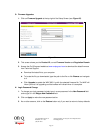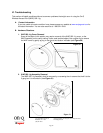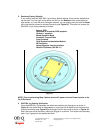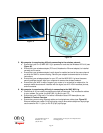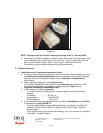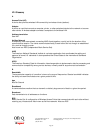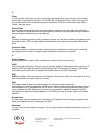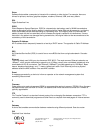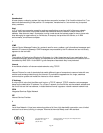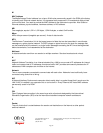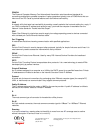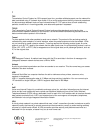
Page 25
301 Fulling Mill Road, Suite G ©Copyright 2005 by On-Q/Legrand, Inc All Rights Reserved.
Middletown, PA 17057 www.onqlegrand.com
(800)-321-2343
VII. Glossary
A
Access Point (AP)
A device that provides wireless LAN connectivity to wireless clients (stations).
Adapter
A device or card that connects a computer, printer, or other peripheral device to the network or to some
other device. A wireless adapter connects a computer to the wireless LAN.
Address translation
See NAT.
Ad-Hoc Network
A temporary local area network connecting WAP clients together, usually just for the duration of the
communication session. The clients communicate directly to each other and not through an established
link, such as through a router.
Also known as: IBSS (Independent Basic Service Set).
ANSI
The American National Standards Institute is a private organization that coordinates the setting and
approval of some U.S. standards. It also represents the United States to the International Standards
Organization.
ASCII
The American Standard Code for Information Interchange refers to alphanumeric data for processing and
communication compatibility among various devices; normally used for asynchronous transmission.
B
Bandwidth
The transmission capacity of a medium in terms of a range of frequencies. Greater bandwidth indicates
the ability to transmit more data over a given period of time.
bps
Bits Per Second
Broadband
A communications medium that can transmit a relatively large amount of data in a given time period.
Broadcast
Data transmission to all addresses or functions.
BSS
Basic Service Set. A configuration of Wireless Access Points that communicate with each other without
resorting any infrastructure. Also known as Ad-Hoc networks. Also see ESS.





